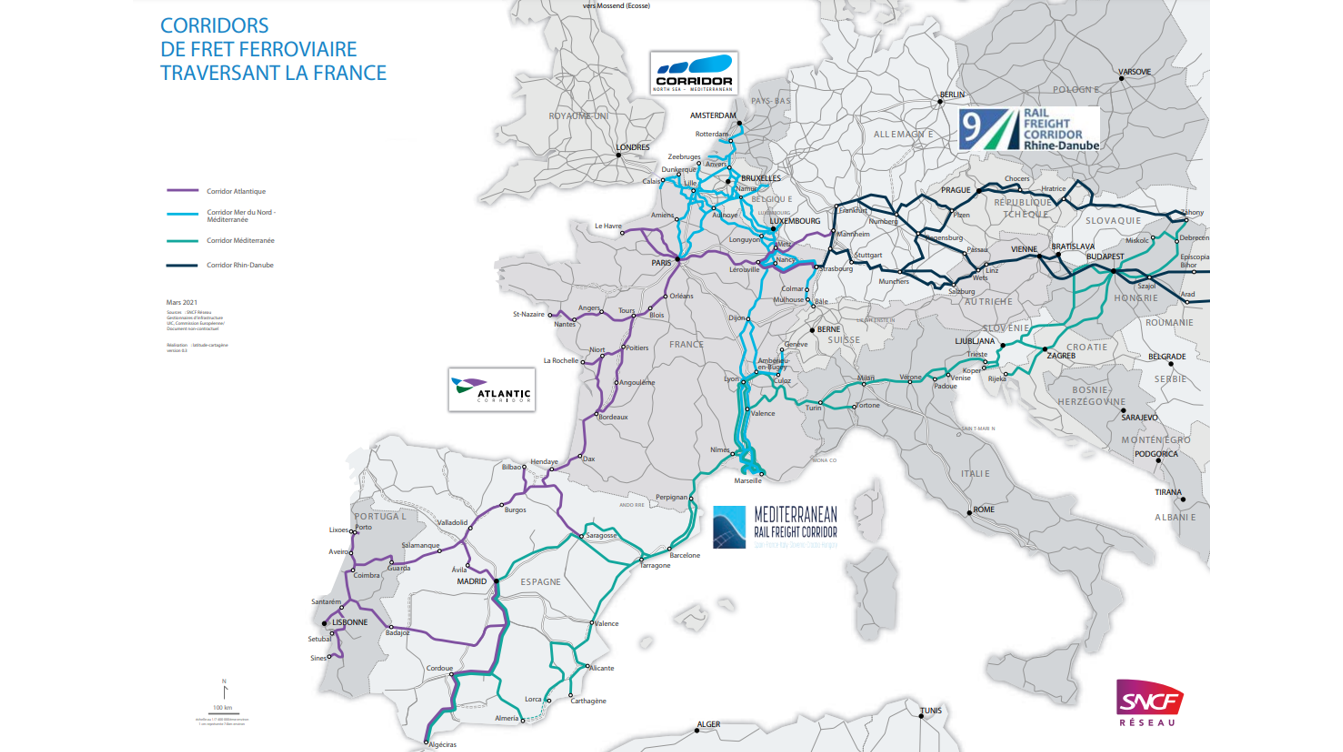The corridor: North Sea - Mediterranean, a rail freight route with over 5,500 km of track linking the Netherlands to the south of France, via Belgium, Luxembourg and Switzerland. Nearly 38,000 trains run on it every year.
The stakeholders: 6 infrastructure managers from 5 different countries, including SNCF Réseau.
The objective: to better coordinate works on the line up to 2026, so that train path capacity is improved in terms of quality and robustness.
The solution: more exchanges between infrastructure managers and a joint schedule of works to ensure, for example, that if one is carrying out works on a line, the other is not carrying out works on the alternative line at the same time.
The result: improved collaboration between countries, smoother traffic flow on the freight route and therefore greater customer satisfaction.



